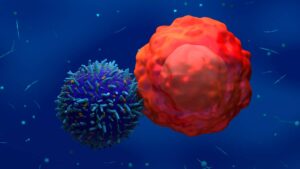Dr Boreham’s Crucible: Kazia reaches the ‘endgame’

Pic: sinology / Moment via Getty Images
In winning rare paediatric disease designation in the US for an aggressive childhood brain cancer last month, Kazia Therapeutics (ASX:KZA) picked up one of the hottest tickets in the biotech world: a priority review voucher from the US Food and Drug Administration (FDA).
While they sound like meaningless paperwork, the vouchers are valuable and fungible, having changed hands for as much as $US350m ($490m). More recent transactions have coalesced between $US150m and $US200m.
The quirk of the incentive scheme for drug developers is that the vouchers are validated on approval of a drug. Thus, the expedited review timeline is only relevant for another late-stage developer, typically a big pharma company, rather than the initial holder.
One advantage is that the documents can be submitted over time and signed off as needed, which is a big thing.
“If you can launch a $1 billion drug, six months earlier it’s worth half a billion dollars,” Kazia chief executive James Garner says. “The idea is not so much we use it but sell it to someone else.”
A fortnight later, on August 20, the FDA also awarded fast-track designation for Kazia’s lead drug paxalisib (formerly GDC-0084), for the brain cancer glioblastoma.
And four days after that, Kazia’s paxalisib picked-up an FDA orphan drug designation for malignant glioma, which includes the rare and aggressive kids’ disease diffuse intrinsic pontine glioma, for which it won the rare paediatric disease award.
Investors have not been impervious to the upbeat tidings, with Kazia shares doubling since then.
“It’s been a really busy time for us and it’s great to see some of these efforts bearing fruit,” Dr Garner says.
High profile victims of rare disease
The most common form of brain cancer, glioblastoma, killed both former Republican presidential candidate John McCain as well as Beau Biden, son of current Democrat challenger Joe Biden.
In an election year Kazia ain’t taking sides!
Local victims include broadcaster Stan Zemanek, Sydney surgeon and reality TV star Chris O’Brien and journalists Andrew Olle and Matt Price.
The disease is relatively rare but not extremely so, with about 133,000 new cases a year — 12,500 of them in the US.
The paediatric treatment pertains to the truly rare and aggressive diffuse intrinsic pontine glioma (DIPG), which affects 300 to 500 kids in the US each year and maybe one-tenth as many here.
“It’s a very aggressive tumour with no existing drug treatment,” Dr Garner says. “The average survival from diagnosis is around nine to 10 months, so this is the absolute definition of unmet medical need.”
Kazia’s ancient roots
Kazia was formerly known as Novogen, Australia’s second oldest listed biotech behind Circadian (now Opthea ASX:OPT).
Novogen bought GDC-0084 from Glioblast Pty Ltd, which had earlier licenced the compound from Roche’s Genentech.
Interestingly, Glioblast was owned by biotech Hall of Famer Paul Hopper and Leslie Chong, who oversaw development of GDC-0084 while at Genentech (she now heads up the ASX-listed Imugene ASX:IMU).
Founded by Dr Graham Kelly, Novogen listed on the ASX in 1994 and then on the US Nasdaq in 1998.
In its tortured history, Novogen has had many guises, including a developer of veterinary products and women’s natural health supplements and red clover leaf derivatives for cancer.
Dr Kelly left the company in 2005 after a strategic difference of opinion with the board, only to return as CEO in 2012.
He departed (again) in 2015 to found the now ASX-listed Noxopharm (ASX:NOX).
Novogen’s board recruited Dr Garner in 2016 to take the company along a more commercially-focused path, rather than dabbling in early stage stuff that never went anywhere.
Novogen then engaged in a legal spat with Noxopharm over intellectual property, which was settled in 2017.
In that year Novogen changed its name to Kazia, which is Hebrew (or possibly Polish) for “this is a meaningless yet pleasant enough name which no one else had trademarked” – and not to be mistaken for 1970s cheap children’s keyboards.
In the clinic
The core problem with glioblastoma is that there’s been little progress treating the condition over the last two decades.
While breast and lung cancer drugs have been repurposed, they don’t quite hit the spot. The usual treatment is a drug called temozolomide.
Paxalisib inhibits a signalling pathway called PI3K, which is expressed in 85 per cent to 90 per cent of glioblastoma tumours.
Interim results from a 30-patient, phase II study showed a five-month median extension in overall survival to 17.7 months, compared with 12.7 months for the control group on temozolomide.
Progression free survival time (that is, the tumour not spreading) extended from 5.3 months to 8.4 months.
The company is about to enter a phase III pivotal study, in view of fronting the US FDA for marketing authorisation.
In an unusual yet efficacious approach, Kazia plans to join a worldwide study called GBM Agile. (GBM being shorthand for glioblastoma).
Created independently of any individual drug company, GBM Agile aims for a standardised approach that generates data in a format the FDA likes to see.
The long-term study involves drug developers slotting in their drug for a certain period, with the collaborative approach creating economies of scale.
The first entrant to the study is a Bayer-owned drug called Stivarga (regorafenib).
“That part is currently recruiting as we speak. Paxalisib should be the second drug to join, and that is slated to start recruiting by the end of the year,” Dr Garner says.
“GBM Agile will recruit up to 200 patients on paxalisib, and roughly the same number in the control arm, so that would imply something like a 400 to 450 patient study.”
However, there’s an element of uncertainty because the study is adaptive (tweaked along the way).
“If we get an answer after, say, 150 patients on paxalisib that the drug clearly works, then the study stops there,” Dr Garner says.
A sound methodology
Kazia’s work is predicated on the notion that temozolomide isn’t effective for two-thirds of glioblastoma patients, which sounds like a big fat fail to us.
But it all depends on whether patients have a ‘methylated’ or ‘unmethylated’ form of the disease. We won’t go into the technical differences, but they relate to genetic factors.
Dr Garner says the ‘methylated’ group will respond to temozolomide, with an average life extension of six to seven months.
But if you’re ‘unmethylated’, expect to live another 12 days or so.
“We can tell in advance whether they will benefit from the drug with absolute accuracy,” Dr Garner says.
Did you know?
Kazia’s annual report informs us that randomised clinical trials were supposedly first devised by 18th Century Scottish doctor James Lind, who worked on the high seas with the British Navy.
Observing high mortalities from scurvy, the good doctor assigned one group of scorbutic sailors oranges and lemons, while the other received the standard of care: seawater.
No surprises for guessing which cohort emerged the healthier.
It is not recorded whether Doc Lind’s methods received ethics committee approval before the voyage.
Partner wanted for second-string therapy
Kazia also has a legacy ovarian cancer drug candidate called Cantrixil (regorafenib), which has passed phase I scrutiny with results pending.
“We don’t see us taking it forward single handedly,” Dr Garner says.
“The drug has shown promise. But ovarian cancer is a complex space and there are lots of new therapies coming along.”
Ideally, the company would like to find a partner with deeper pockets and more technical expertise in ovarian cancer.
Finances and performance
Presciently, Kazia beat the biotech sector’s rush to raise capital by going to the well in April and gathering $9m in a placement and share purchase plan.
The company also raised $4m the previous October.
“We have money well into next year at this stage,” Dr Garner says. “We are in the nice position in that we are not under pressure to do anything.
“It’s still a very uncertain market. Coronavirus isn’t going away, we have the US presidential election and some of the implications of the pandemic are yet to register.”
Kazia shares touched a 12-month low of 37c on May 11 this year, but then soared to a record high of $1.12 on August 20.
The shares touched a record low of 32c on June 21 last year.
Kazia Therapeutics (ASX:KZA) share price charts
Dr Garner says the Nasdaq listing (American depository receipts) used to account for two to three times the turnover of the local shares. But more recently the interest from local investors has been more pronounced.
In June 2016, Kazia was valued at less than $4m, compared with circa $95m now.
Dr Boreham’s diagnosis:
The harsh reality of cancer drug development is that the treatments usually offer more time, rather than a curative.
As we noted, paxalisib at this stage looks like adding five months.
Depending on the cost of the drug, maybe there’s a cost-benefit trade-off. But any brain cancer doctor would be happy to offer the drug in the context that less than 5 per cent of glioblastoma patients will live beyond five years after diagnosis.
Dr Garner says the company has reached an “endgame” where management starts to focus on commercialisation options.
Not surprisingly, Kazia is keen on adding value to the compound with more clinical work. Beyond that, management’s “base case” is licensing the drug to a larger company or companies.
Kazia should also be considered a takeover target, although we have to say that foreign biotech acquirers are much more frequently talked about than spotted on our shores.
“We want do whatever is the best opportunity for patients to access the drug and the best value for shareholders,” Dr Garner says.
Meanwhile, the rare paediatric priority review voucher scheme is due to expire in September, although it might be extended by whoever wins the keys to the White House.
But it’s likely that at least there will be a freeze on new issuances, which makes the current paper out there more valuable. In theory, at least.
Dr Garner says the company exemplifies the old gag about overnight success being 10 years in the making.
“There’s definitely a sense the Australian market is waking up to the stock –and not before time,” he says.
Disclosure: Dr Boreham is not a qualified medical practitioner and does not possess a doctorate of any sort. Being in locked-down Melbourne he would gratefully accept any ‘get-out-of-jail free’ voucher.
This column first appeared in Biotech Daily.

UNLOCK INSIGHTS
Discover the untold stories of emerging ASX stocks.
Daily news and expert analysis, it's free to subscribe.
By proceeding, you confirm you understand that we handle personal information in accordance with our Privacy Policy.








